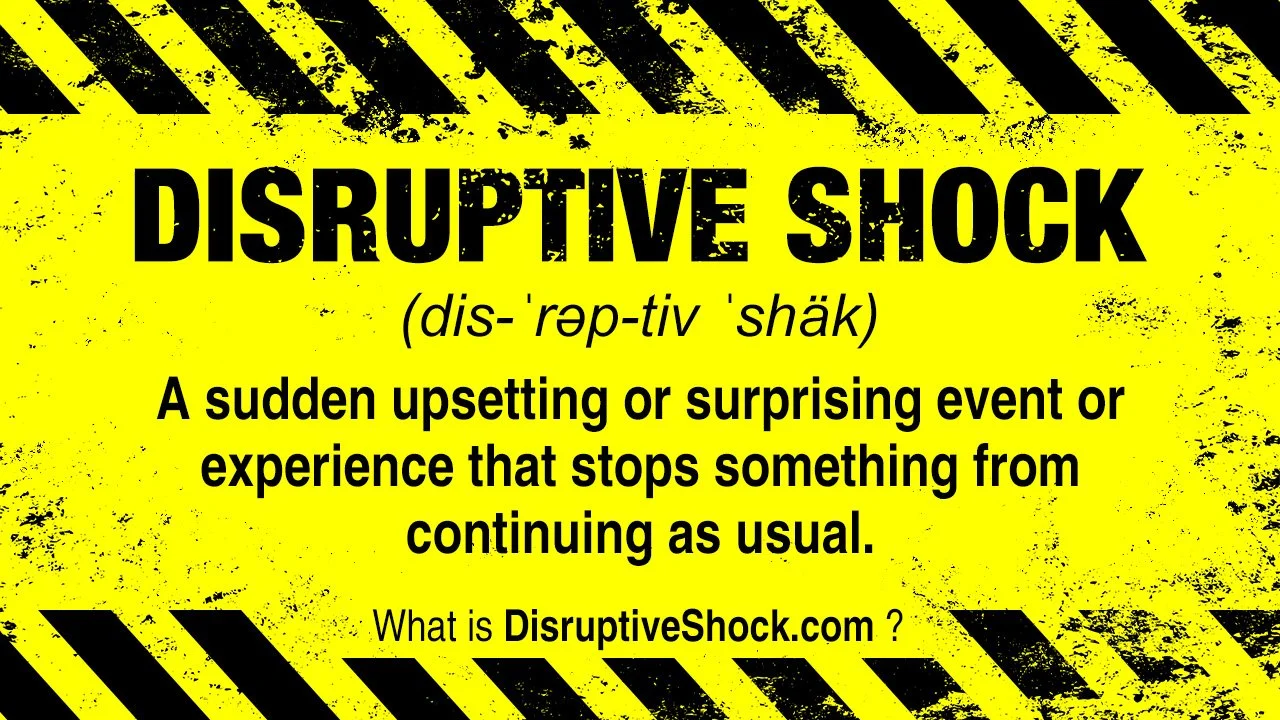Disruptive Shock Innovation Blueprint
Disruptive Shock | dis-ˈrəp-tiv SHäk | noun
When something completely unexpected happens and changes everything about how your organization operates - that's a disruptive shock. Think of COVID-19, sudden technology breakthroughs, or major economic shifts that no one saw coming.
Disruptive Shock is our approach for turning these chaotic moments into opportunities through creativity and innovation. It combines quick, creative problem-solving with smart planning to help you respond when the unexpected hits. Instead of just surviving, you can use these moments to innovate in ways that wouldn't be possible during normal times.
"When the pandemic hit, Main Street Manufacturing used creative problem-solving and Disruptive Shock principles to quickly innovate new product lines while keeping their core business stable, developing solutions that helped both their community and their bottom line."
Executive Summary
Disruptive shocks are those moments when something totally unexpected happens that changes everything - like the COVID-19 pandemic, a massive technology shift, or a sudden economic collapse. These moments require new approaches because the old playbooks simply don't work anymore.
This blueprint shows you two important paths forward:
How to respond effectively when a shock hits and you weren't prepared
How to build capabilities now that will help you turn future shocks into opportunities
Most organizations just try to survive these challenging moments. But the most successful ones see beyond the challenges and find new possibilities. They use disruption as a catalyst for positive change that might not happen during normal times.
The key isn't trying to predict specific disasters. Instead, it's about building skills that help you respond to any major surprise:
Quickly making sense of confusing situations
Finding solutions when traditional approaches don't work
Discovering new uses for existing resources and capabilities
Spotting unique opportunities that only exist during disruption
Organizations that develop these capabilities typically:
Respond 60-80% faster when disruption hits
Develop successful new approaches 2-3 times more often during crisis
Gain 10-30% more market share through their adaptability
Become more flexible for everyday business too
Why This Matters
During the Great Depression, while most businesses were just trying to stay afloat, forward-thinking companies like Disney and HP were actually getting started. Killerinnovations In every major disruption throughout history, some organizations not only survived but used the moment to leap ahead.
What makes the difference? It's not about prediction—it's about adaptation and innovation when it matters most. The organizations that succeed are those that can quickly develop new ideas, test solutions, and reimagine their approach when circumstances demand it.
Consider what happened during the pandemic: some restaurants barely survived by cutting costs and waiting it out. Others found new paths—creating outdoor dining experiences, developing meal kits, and rethinking their entire business model. Many of these changes became permanent advantages that continued generating value even after the immediate crisis passed.
Building these capabilities pays off in three big ways:
Short-term: You suffer less damage when disruption hits
Medium-term: Your solutions provide advantages during recovery
Long-term: You develop the ability to spot and capitalize on opportunities that only exist during chaotic times
What is a Disruptive Shock?
A disruptive shock is a sudden, unexpected event that demands immediate action because it changes everything overnight. Unlike other business challenges, these shocks hit with little or no warning and require rapid response.
Disruptive shocks are fundamentally different from:
Operational disruptions - These are your normal fluctuations of pricing, supply shortages, and demand changes that businesses can generally plan for. They happen gradually enough to adjust.
Competitive disruptions - These come from outside to gain a competitive edge, like Uber disrupting the taxi industry or Tesla with electric cars. While impactful, they typically unfold over months or years, giving businesses time to adapt.
Disruptive shocks - These cannot be anticipated or planned for - they hit suddenly and demand immediate response. A pandemic shutting down global commerce overnight, a natural disaster destroying infrastructure, or a geopolitical crisis cutting off critical resources requires rapid, creative responses without the luxury of preparation time.
The speed and unexpectedness are what make disruptive shocks so challenging. When a shock hits, you don't have months to analyze and develop a strategy - you have hours or days to respond before significant damage occurs. This compressed timeframe is what makes traditional planning insufficient and demands a different approach.
Examples include:
COVID-19 pandemic forcing business closures within days
Natural disasters requiring immediate operational overhauls
Sudden regulatory changes demanding compliance within weeks
Geopolitical crises disrupting supply chains overnight
Technological breakthroughs like Chat-GPT that require an immediate response
This blueprint focuses on building the capabilities to respond effectively in those critical first hours and days when a shock hits, while also positioning your organization to find opportunities that others miss during the chaos.
